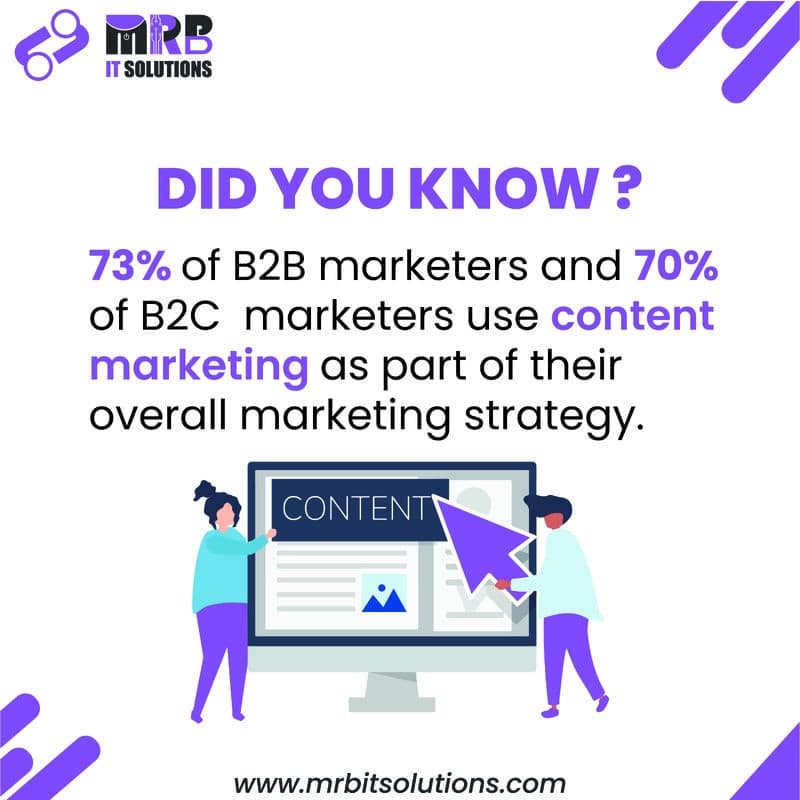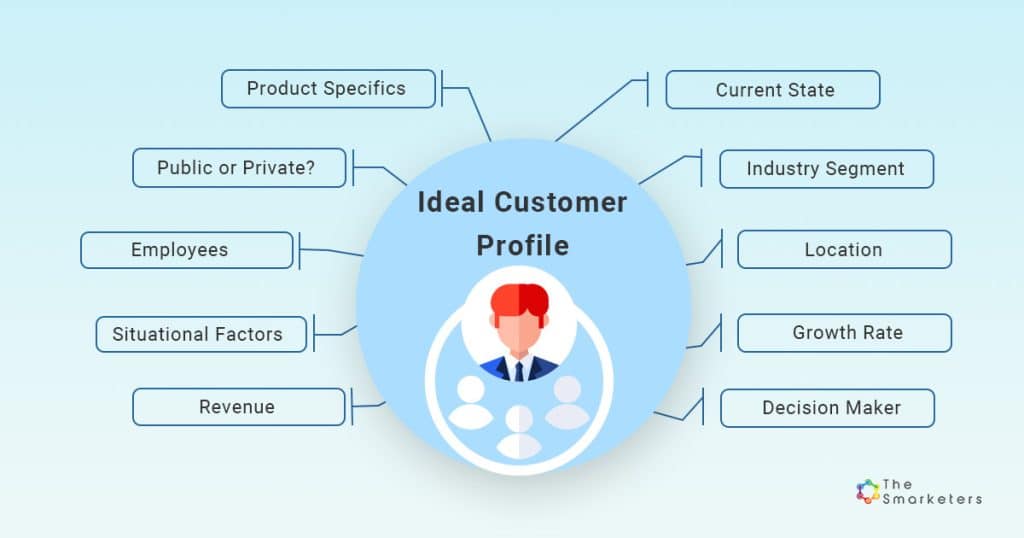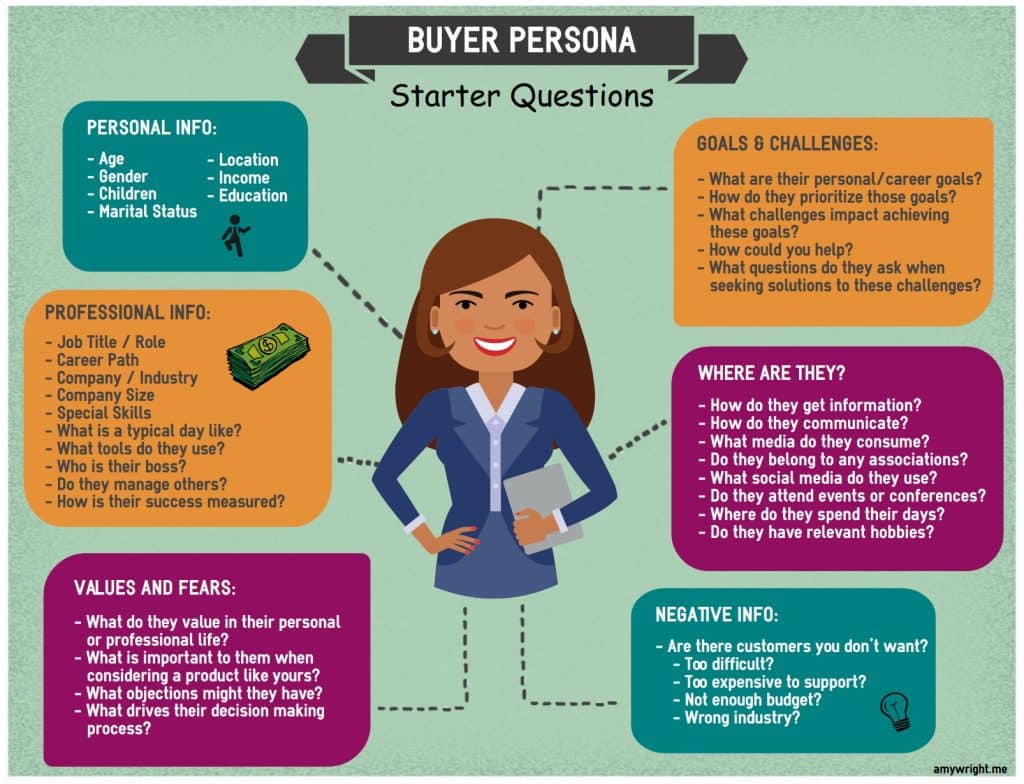
How to Understand Your Audience and Tweak Your Content Strategy Accordingly
There’s something interesting you should know about B2B companies and their content strategies. Most of them are doing it at a basic, functional level. They’re focusing on what each part of their business needs, tailoring their content to these specific areas. But here’s the catch – not many have a strategy that covers the whole business.
We’re talking about reaching out to different kinds of customers with content that’s all about marketing and selling. This approach is changing the game. Why? Because audiences today are savvy; they educate themselves. They’re all over digital content and online channels. This shift is creating new needs and challenges.
If you don’t have a solid, company-wide content strategy, you’re probably not hitting your top goals as effectively as you could. We’re talking about key stuff like:
- Pulling in new customers
- Growing your business organically
- Making your sales and marketing more productive (and cost-effective)
- Getting the kind of data that powers smart, data-driven decisions
And let’s not forget about giving your customers a consistently awesome experience.
When companies really nail their content strategy at the business level, the results can be game-changing. We’re seeing better content quality, more relevant and engaging material, faster delivery, and lower costs. Plus, it’s a big win for staying ahead of the competition and making customers happy.
So, where do you start? The first step is understanding your audience. We call it the ‘Understand Audiences (Buyers)’ framework. When our clients get this right, they see what they’ve been missing in their content strategy. This post is going to give you a rundown of this crucial first step.
Quick Takeaways
- Understanding your audience transforms your content strategy from generic messaging to targeted communication that resonates with their specific needs and desires.
- Identifying and segmenting your audience into distinct groups or ‘content constituents’ is crucial for developing a content strategy that addresses diverse needs and maximizes engagement.
- Effective content strategies require well-developed personas that go beyond basic templates, incorporating deep audience insights to guide content creation.
- Adapting content strategy to align with the buyer’s decision-making process is essential for effective marketing and sales alignment.
How Understanding Your Audience Defines Your Content Strategy
You and I both know that ‘understanding your audience’ isn’t just some fancy marketing jargon we throw around to sound smart. It’s the bread and butter of what we do here at Marketing Insider Group.
Why? Because getting into the heads of your audience is what makes or breaks your content strategy.
Think about it. When you really know your audience – and I mean really know them – you’re not just shooting arrows in the dark hoping to hit something. You’re targeting exactly what your audience needs, wants, and laughs at (or rolls their eyes at). It’s about crafting messages that speak to them, not at them.
And we’re not alone in this approach. According to the Content Marketing Institute, a whopping 73% of B2B marketers and 70% of B2C marketers use content marketing as part of their overall strategy, underscoring the universal importance of understanding your audience.

Image Source: MRB IT Solutions
Now, how do we create the right messages? First off, we listen. And not just ‘nodding your head while thinking about lunch’ listening. We dive deep into their world:
- What are their pain points?
- What gets them excited?
- What keeps them up at night?
This isn’t just about demographics. It’s about getting down to the nitty-gritty of their daily lives.
Then, we use what we learn. We tailor our content to fit their needs like a glove. If our audience is craving easy-to-digest, practical advice, we’re not going to bombard them with highfalutin language and complex theories. Instead, we keep it simple, straightforward, and useful.
But here’s the kicker – understanding your audience is not a ‘set it and forget it’ kind of deal. Audiences evolve, trends change, and what worked yesterday might be old news today. So, we stay on our toes, constantly adapting and tweaking our strategy. It’s a never-ending dance, but hey, that’s what keeps our jobs interesting, right?
In short, ‘understanding your audience’ is the cornerstone of everything we do. It’s what guides our content strategy, shapes our messages, and, ultimately, drives our success.
First: Who
Remember, the first thing you need to do is think about who: your audience. Consider the many groups across your business, and their audiences, for whom content is important. We refer to these as “content constituents.”
Content Constituents and Segments
The starting point for business level content strategy is to list each constituency. We suggest meeting with them to identify their primary audiences and sub-segments.
The primary use case requirements for each function and audience segment should be discussed and documented. Use Case Requirement definition is the third competency in our framework. This work must be conducted at each functional level.
Business level content strategy reviews functional requirements to determine opportunities for content synergy, content priorities, and investment decisions.
When the list of all customer engaging constituents, audiences and personas is aggregated it often produces surprises, and usually identification of overlooked or under-served requirements.
Ideal Customer Profile
Each group should define and document the profile of their most important audience segments. This is similar to the critical selling tool, ideal customer profile.

Image Source: Smarketers
If you don’t have an ideal customer profile documented for your target buyers, do this immediately. Lack of a documented ideal customer profile is an indication of low maturity, or lack of process discipline in this work.
Personas
Despite all the discussion and activity around personas, we often find them weak resources to inform both an effective content strategy and quality content.
It’s important to appreciate that templates that instruct “what to do” do not equate to effective, “how to do it” execution. We find people often know what to do, but lack the competency and discipline to execute effectively.
An example and symptom is when personas are developed exclusively by internal people. Even worse, when they are developed exclusively by external consultants. We have found the best results require an experienced external facilitator, with good frameworks and processes. This resource represents the audience or buyer perspective. They must challenge internal biases that naturally arise.
Since this is such an important requirement I’ll provide a few examples of categories we often find missing or inadequately built out in Personas we evaluate:
- Beliefs. What are the key beliefs each persona holds that relate to the business problems you address, urgency factors related to those problems, solution options available to them, and decision process/criteria (among others)? Beliefs are a primary decision driver.
- Value Model. How does each persona define value, for their role, as well as personal tendencies?
- How to Capture Attention. This includes identifying problem symptoms and triggering events that would be evident for each persona. It also includes language that will resonate.
- Data to Collect. What data do you want to collect about each persona that will help you better understand them, improve your strategy, and better target your content and engagement methods?

When you aggregate the lists from sales, the sales channel, business partners, marketing and customer service, you will see commonality of requirements across all constituent groups.
The implications of each siloed function independently trying to develop and execute content strategies should be clear after completing just this first phase of this first competency.
Next: Why
Business Problems and Causes
Document the business problems your products, services or solutions address.
By bridging the gap between the customer’s challenges and your solutions, you can create content that resonates on a deeper level, driving home the real-world impact and value of what you offer. This elevates your content from informative to transformative, directly addressing the ‘why’ that motivates customer decisions.
Impact
Developing methods to measure the impact of problems on business, functional and persona performance and outcomes is usually completely missing from content strategies we see.
The CEB Challenger Customer work does an excellent job highlighting the importance of helping prospects quantify the cost of their status quo, relative to those business problems. Most organizations focus on the gain customers will realize after buying their solution. CEB explains why helping buyers quantify the cost of the status quo is important.
Then: How
Despite the rhetoric and general awareness of the “buyer journey’s,” this is usually another weak input to content strategy.
There are many culprits here. Using generic buying stages is a way to get started quickly, but it really should be research based to provide the best insights. Either way, the details at each stage must be relevant to your specific buyers. These details include buyer: information requirements, activities, questions, decision criteria and decisions.
Too often the people doing this work don’t have the right experience, access to buyers, or research resources. Even the sales organization usually isn’t helpful here. They desperately need a better understanding of how buyers buy.
For complex, considered, or value sales (not transactional), many buyers may lack a formal buying process. B2B sellers have to “create opportunities” in as many as 90% of their prospects. By definition, there is no formal buying decision process to start!
Even as buying teams move into an active buying process, functional buyers may never have purchased anything like what you are providing. Buyers may not even know internal, standard purchasing requirements.
We recommend shifting language and thinking about the B2B buying process from a “journey,” to a “decision process.”

Image Source: Adience
Start by defining your buyer’s “problem-solving decision scenarios” that your products and services address. Calling this a buying decision process naturally raises two helpful requirements:
- You must identify the decisions buyers must make at each stage of the process.
- To make decisions, buyers need answers to key questions.
In short, buyers buy when all of their primary buying questions and interim decisions are adequately addressed.
Everything you do should align to your buyer’s decision process. For example, a primary “job of content” is to address buyer questions. Also, by identifying stage based activities and questions, marketing and sales people have a way to locate prospects in their decision process.
In The Context Of Audience / Buyer Options
Audiences and buyers have options. How have you documented and assessed those options for input to your content strategy?
Buyer options result in additional questions and decisions that must be addressed. This is especially important for the options “remain with status quo,” or “fix with internal or less expensive approaches.”
Leading companies consider and treat content as a product. Content is the first product your customers “acquire” through their engagement process. They should use your content throughout the entire “customer lifecycle.”
- What is your competitive strategy for positioning your content?
- What are your competitors creating?
- How will you avoid investing in and creating undifferentiated, “me three” content?
- What content will you curate rather than create?
- Remember, competitors are not just direct competitors, but anyone who is producing content that competes with yours.
The same considerations apply to the functional capabilities of direct competitors. If competitors feature strong or unique capabilities, your conversations, messages and content must address this challenge. If they are missing capabilities you have, you want to focus heavily to exploit those capabilities.
How To Execute
Just like the business budgeting process, this work must be conducted on two levels.
Universal and foundational assessments that apply to most functional groups should be developed first, as a business level, strategic initiative. Examples include:
- Buyer business problems
- Decision process
- Value models
- Competitive assessment
- Many elements from the other five strategy frameworks
Think of this as building out the “core foundation” for all content and customer engagement activities.
Then, universal foundations can be leveraged at each functional level. Functional and tactic groups can identify differences or additional elements that they require.
Content strategy should be a continuous and evolving process. A common framework, and strong foundation focuses each function on capturing and documenting incremental, changing and deeper insights.
Without a comprehensive framework, good execution processes, and professional external facilitation, internal biases inherently weaken the final results.
Your content strategy will inform and direct your investments and activities in marketing and sales, as well as for content development. It will impact marketing and selling performance and efficiency.
This means your content strategy will have a material impact on new customer acquisition, revenue growth, and selling costs. The question is, will that impact be positive or negative?
A lot is at stake. Given the business results that depend on this critical foundation, it makes sense to have your content strategy audited by external professionals, on an annual basis.
Expert Insights on Understanding Your Audience
When was the last time you said something you really wish you could take back – be it at a party, an interview, or some other social setting?
We all mix up names, misremember personal details, or make an incorrect judgment occasionally. And although some of them are very superficial and minor, it’s tough to shake the feeling that the other person won’t forget the error, especially if it was a first impression.
We did a no-holds-barred talk with Matt Heinz on the faux pas caused due to not understanding your audience. These can come back to bite you in marketing, branding and sales.
Matt is the president of Heinz Marketing, an organization that focuses on strategic customer acquisition and retention strategy and execution. Basically, if you need to grow, this is the guy to know. (But definitely don’t ask him how he enjoyed his time at Washington State.)
Video Source: Heinz Marketing
We got the chance to sit down with Matt to discuss his approach to creating content that readers find meaningful and personally important.
Read on to see what Matt thinks about knowing your audience, building a “recipe” for content resonation, and why it’s so hard for a lot of marketers to connect with their customers.
1. As a marketer, how do you get to the point of knowing how to do the right things for your audience?
Well, it starts with anything and everything you do to understand foundationally who your target audience is. I think this is why talking to customers is so important. This is why relying on people within the industry is so important. I think you develop that foundation. You continue to learn and read and talk to those people.
I’m old enough now to remember when we had to do focus groups to learn more about customers and now there’s a daily real time focus group going on all around us if we are willing to listen and interpret and triage that information.
So, I think it’s really important for companies to invest in that foundation of knowledge about the customer. Not only developing that knowledge, but sharing it.
2. Right, and that’s the big missing link. You’ve done all this research and tried to listen. You’re kind of going through the motions, but sometimes, this type of knowledge lives just in people’s heads, kind of passed around like campfire stories.
If it’s institutional knowledge in those people’s heads, you better hope that those people never get sick and they never get fired and never leave, because it’s going to walk out the door with them.
3. Say you’re a marketer who cares about resonating with their audience. How would you recommend they go about this change management process of getting the type of buy-in that they would need from their leadership or from their team to really focus on this stuff?
I think, inherently, it’s not something that a lot of companies will prioritize, at least in isolation. Increasingly, I think they are more before-and-after stories of companies that embrace that deeper customer understanding, as well as the horror stories, and the downside of not doing it in general. I can give you many examples of people that lost deals because they lowercase the ‘r’ in realtor. It may sound superficial and trite, but we all have things that are near and dear to us.
I went to the University of Washington, and our chief in-state rival was Washington State. Every once in a while, someone from out of state will say, “Oh, so you went to Washington State,” just not even thinking about it. That’s like telling a Yankee fan that your favorite team is the Red Sox. Again, it’s dumb and superficial maybe, but it’s meaningful.
So, it would be great if we all made purchase decisions based on logic. Unfortunately, B2B buyers use logic but also use emotion and use politics and use a variety of irrational but important-to-them criteria to create preference and trust and to consummate relationships with vendors and others in a B2B context.
4. Do you think that there are certain pain points in the B2B marketing experience that the solution would be, “Oh, I need to resonate”?
I can’t think of a lot of situations where it isn’t a good idea to create resonance. Some of that has to do with simply both understanding your audience well enough to ask them the right questions, as well as asking questions on the fly to understand how everyone uniquely thinks about the problem.
It’s very likely that there are meta-trends among a particular target audience you’re speaking with on any given day. But any given week, any given month, or any given quarter, there are more specific pain points or obstacles that person is dealing with.
5. When you encounter resonant content out there in the world, do you see it as having a certain set of characteristics or a certain quantity of ingredients?
I think there are some foundational building blocks that make it a lot easier. Very few people take the time to build personas in a way that meaningfully articulates the challenges and pressures and needs of an audience in addition to the benefits of using your product.
Operationalizing that understanding inside your organization is step two – making sure that your marketing represents it. It’s built into their templates. It’s built into their training so that they’re seeing it; they are practicing it; they’re comfortable with it. They sound natural with it.
A third piece I think is just the ongoing education, the ongoing training, the ongoing research, the ongoing exposure to your customers directly.
6. Is this something that you think about day to day? Creating content that’s going to resonate?
Absolutely. We create a lot of content. We blog almost every day. And we do have an editorial calendar, we have themes that we care about, but I would say that fairly quickly we will adjust our editorial calendar based on something that we’re observing in the market, something we are seeing as a priority among our customers.
That means listening to what they are challenged with, listening to their questions, and understanding where they’re roadblocks are. Not in general, not three years ago, not based on what I learned in MBA school, but based on what they’re saying right now. So for me to be able to create content that’s truly achieved that objective, it means I have to have that regular input from customers.
7. What are some of the questions that you ask your audience when you talk to them?
I go right back up to the top and say: What are your goals? What is keeping you from getting there? A simple way of starting that is often saying, “What numbers are you trying to achieve? What are you measured against? And what are the primary challenges keeping you from getting there?”
What I like about that question is most people aren’t going to respond necessarily with the most important roadblock or challenge, they’re going to respond with the one that is most prescient to them right now.
8. Why do you think it’s so hard for marketers to create content that resonates or to focus on resonance as a goal?
The most common answer is that we can’t get out of our own way. We are so enamored with our own products and services. We are so enamored with tying everything back to a product or a failed message that we don’t have the patience or the longevity to stick with a message or a stream of the conversation that addresses the customer more directly.
All of us have things we want to sell, right? None of us need to shy away from it, but very few people go to the hardware store because they want to buy a drill. Usually people buy a drill because they want a hole, right? We’re going to be much more successful selling more drills if we can help people envision and understand the connection between what we’re selling and what they’re getting.
Understanding Your Audience: The Key to A Successful Strategy
It’s clear that understanding your audience isn’t just a part of the content strategy; it’s the heart of it.
This deep insight into who your audience is and what they need shapes every aspect of your content, from creation to execution. It’s about aligning your content with the evolving needs and preferences of your audience, ensuring that every piece you produce resonates and drives meaningful engagement.
Remember, a content strategy that’s rooted in a profound understanding of your audience is more than just effective—it’s transformative. It’s what sets you apart in a crowded market and paves the way for lasting success and growth.
Ready to understand your audience and perfect your content strategy? Check out our SEO Blog Writing Service or schedule a quick consultation to learn more about how Marketing Insider Group can help you earn more leads for your business.






